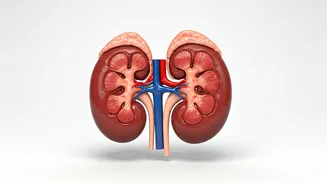Stay Hydrated
Proper hydration is crucial for preventing leg cramps. Dehydration can cause muscles to contract and cramp. Aim to drink enough water throughout the day,
especially before bedtime and after workouts. Staying hydrated helps maintain electrolyte balance, which is vital for muscle function. Adequate water intake also aids in muscle recovery and reduces the likelihood of cramping. Carry a water bottle with you and sip on it consistently to ensure you're meeting your daily hydration goals. Avoid sugary drinks and excessive caffeine, as these can have a diuretic effect, leading to fluid loss. Ensure you are well hydrated throughout the day, and prioritize water over other beverages.
Stretch Regularly
Regular stretching is a simple yet powerful technique to ward off leg cramps. Before bed, gently stretch your calf muscles and hamstrings. Holding stretches for about 30 seconds can improve flexibility and reduce muscle tightness, which are common triggers for cramps. You can incorporate dynamic stretches before any physical activity and static stretches after. Pay attention to any areas of tightness and spend more time stretching them. Regularly stretching muscles can lead to improved circulation and better muscle function. A consistent stretching routine can also boost your overall fitness, contributing to reduced leg cramps. Prioritize stretching as an essential part of your daily activities.
Proper Footwear
Wearing supportive footwear throughout the day is often overlooked, but it plays a significant role in preventing leg cramps. Ill-fitting or unsupportive shoes can strain your leg muscles, increasing the risk of cramps. Choose shoes that provide proper arch support and cushioning, particularly if you are on your feet for extended periods. When you are exercising, use footwear specific for that activity to give your feet and legs adequate support. If you tend to wear high heels, consider changing to a more comfortable style to reduce the strain on your legs. Comfortable shoes not only support your feet but also keep your muscles and tendons relaxed.
Electrolyte Balance
Electrolyte imbalances, such as those caused by low levels of potassium, magnesium, and calcium, can contribute to leg cramps. Consuming foods rich in these minerals is a smart way to prevent cramps. Bananas, avocados, sweet potatoes, and leafy green vegetables are good sources of potassium. Magnesium can be found in nuts, seeds, and whole grains. Calcium is abundant in dairy products and some plant-based alternatives. You can also consider taking electrolyte supplements, but always consult with a healthcare professional before starting any new supplement regimen. Maintaining a proper electrolyte balance helps ensure your muscles function properly and reduces the chance of cramping.
Moderate Exercise
While excessive exercise can sometimes lead to leg cramps, regular, moderate physical activity can actually help prevent them. Exercise improves blood circulation, strengthens muscles, and increases overall fitness. Activities like walking, swimming, and cycling are excellent choices. Start gradually and increase the intensity and duration of your workouts progressively. Avoid overexertion, especially if you are new to exercise, and always listen to your body. Incorporate both cardiovascular and strength-training exercises into your routine for comprehensive benefits. Regular exercise will strengthen your muscles, and help prevent cramps.
Consider Medications
Some medications can increase your risk of leg cramps as a side effect. Diuretics, statins, and certain antidepressants are known to cause muscle cramps in some individuals. If you frequently experience leg cramps, discuss your medications with your doctor or pharmacist. They may be able to adjust your dosage or recommend alternative medications that are less likely to cause cramps. Always follow the advice of your healthcare provider. Never stop taking prescribed medication without seeking professional guidance. By staying informed about your medications, you can manage the factors that may increase the occurrence of cramps.
Stay Warm
Cold temperatures can sometimes trigger muscle cramps. Keep your legs warm, especially during colder months or in air-conditioned environments. Wear warm socks, use a blanket to keep your legs covered, or consider using a heating pad before bed. Maintaining a comfortable body temperature helps keep your muscles relaxed and less prone to cramping. Make sure to avoid sleeping in a cold environment. Consider using a hot water bottle to keep your muscles relaxed. Preventing the cold from reaching your legs can significantly reduce the occurrence of leg cramps.
Massage Muscles
Massaging your leg muscles before bed can help to reduce muscle tightness and promote relaxation. Gently massage the affected muscles for a few minutes. Use your hands to apply gentle pressure and move your fingers along the muscle fibers. Focus on any areas of tightness or tension. You can also use a foam roller or a massage ball to target specific muscle groups. Self-massage before sleep can enhance blood flow and loosen tight muscles, reducing the likelihood of cramps. Regularly massaging your leg muscles can significantly reduce cramps and increase the quality of sleep.
Evaluate Diet
A balanced diet can provide the nutrients your muscles need to function properly. Pay close attention to what you eat. Limit your intake of processed foods, excessive caffeine, and alcohol, as they can sometimes contribute to dehydration and muscle imbalances. Focus on eating a diet rich in whole foods, including fruits, vegetables, lean proteins, and whole grains. Ensure you're getting adequate amounts of essential vitamins and minerals, which can support overall muscle health. Make it a habit to eat a balanced diet to promote better sleep and fewer leg cramps. Eating the right foods can also enhance the quality of your sleep, helping you to feel refreshed and energized.
Medical Attention
If you experience frequent and severe leg cramps, or if they are accompanied by other symptoms such as muscle weakness, redness, or swelling, it's essential to seek medical attention. Persistent cramps may indicate an underlying medical condition or a nutrient deficiency that needs professional diagnosis and treatment. A doctor can evaluate your medical history, perform necessary tests, and provide tailored recommendations. Do not hesitate to consult a health professional for proper diagnosis and treatment. Early intervention can prevent serious complications and improve your overall health. Prompt medical evaluation is critical for resolving persistent and severe leg cramps.











